|
It truly started with pair of shoes, our Balmorals to be exact. I was researching a period advertisement of a Hartford Connecticut shoe seller Marcy & Haynes, being initially drawn to the tag line “Warm Shoes sometimes saves a Doctor’s bills.
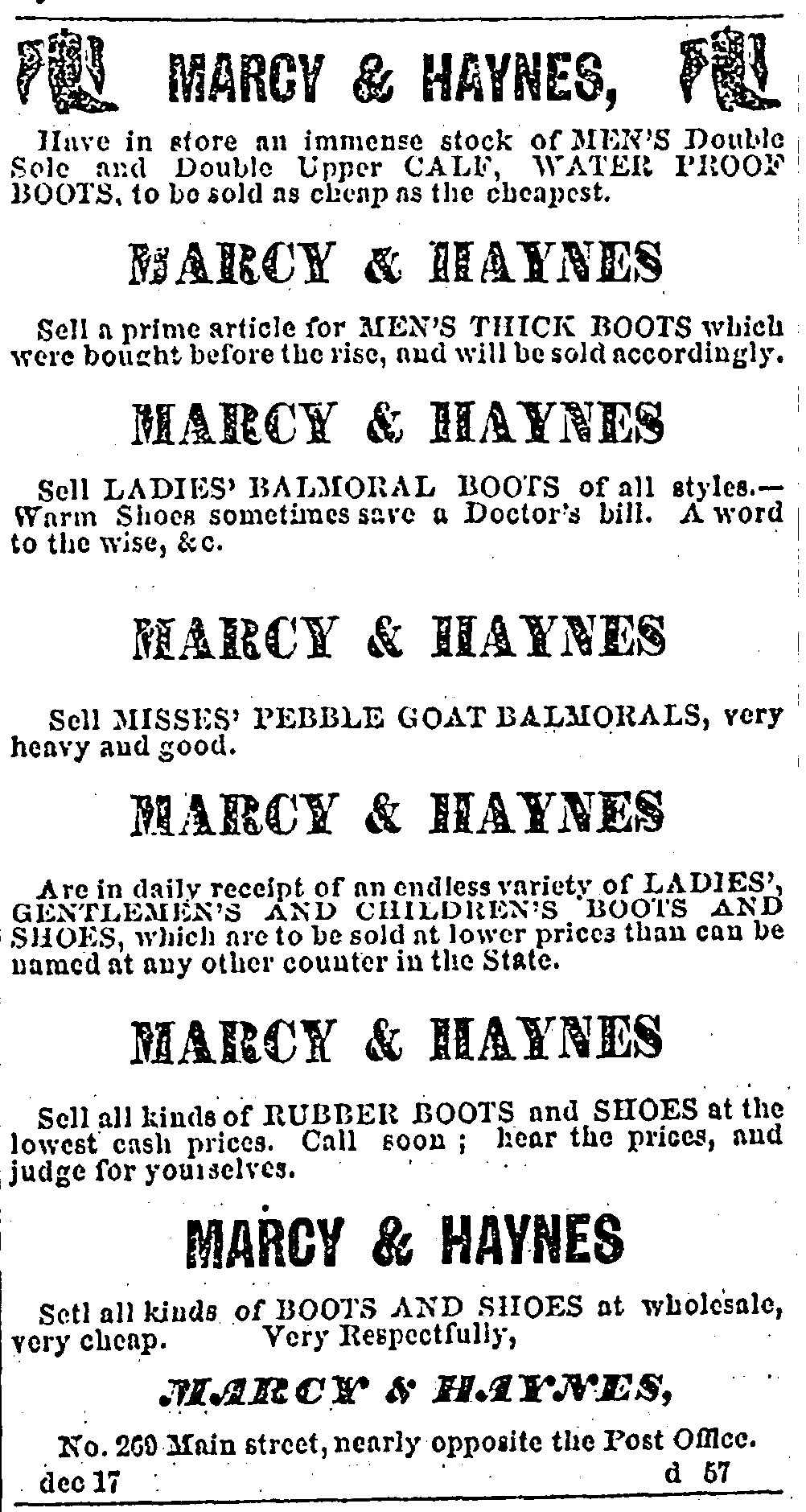 |
|
An advertisment for the neighboring business, above that of the Marcy & Haynes shoe store.
|
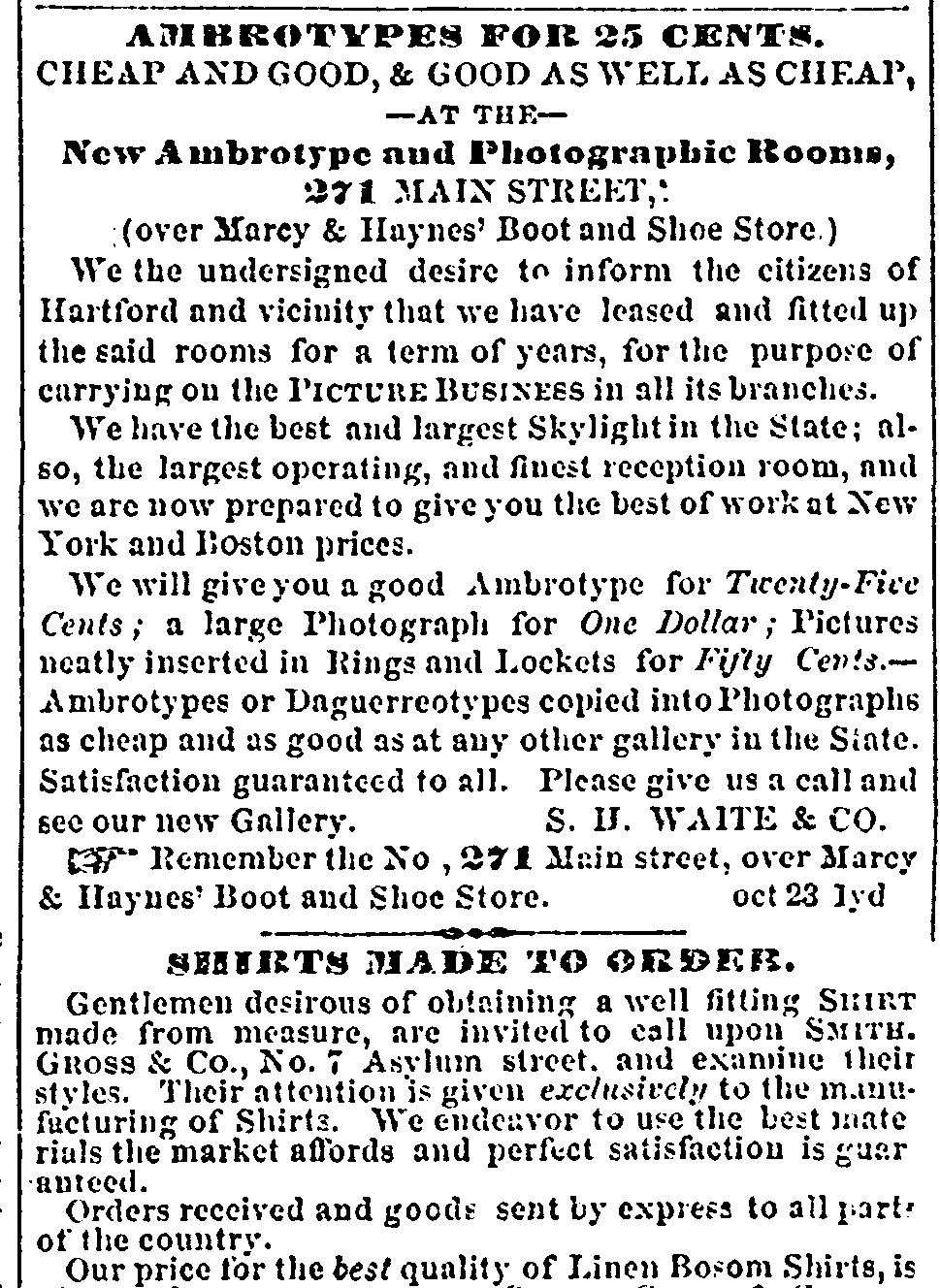 |
I then began to wonder who they were, and if they played a bigger role on the stage of the 19th century. This led me to discover one of their personal fractional currency which had come up for auction. This currency was backed by the Phoenix Bank, also located in Hartford.
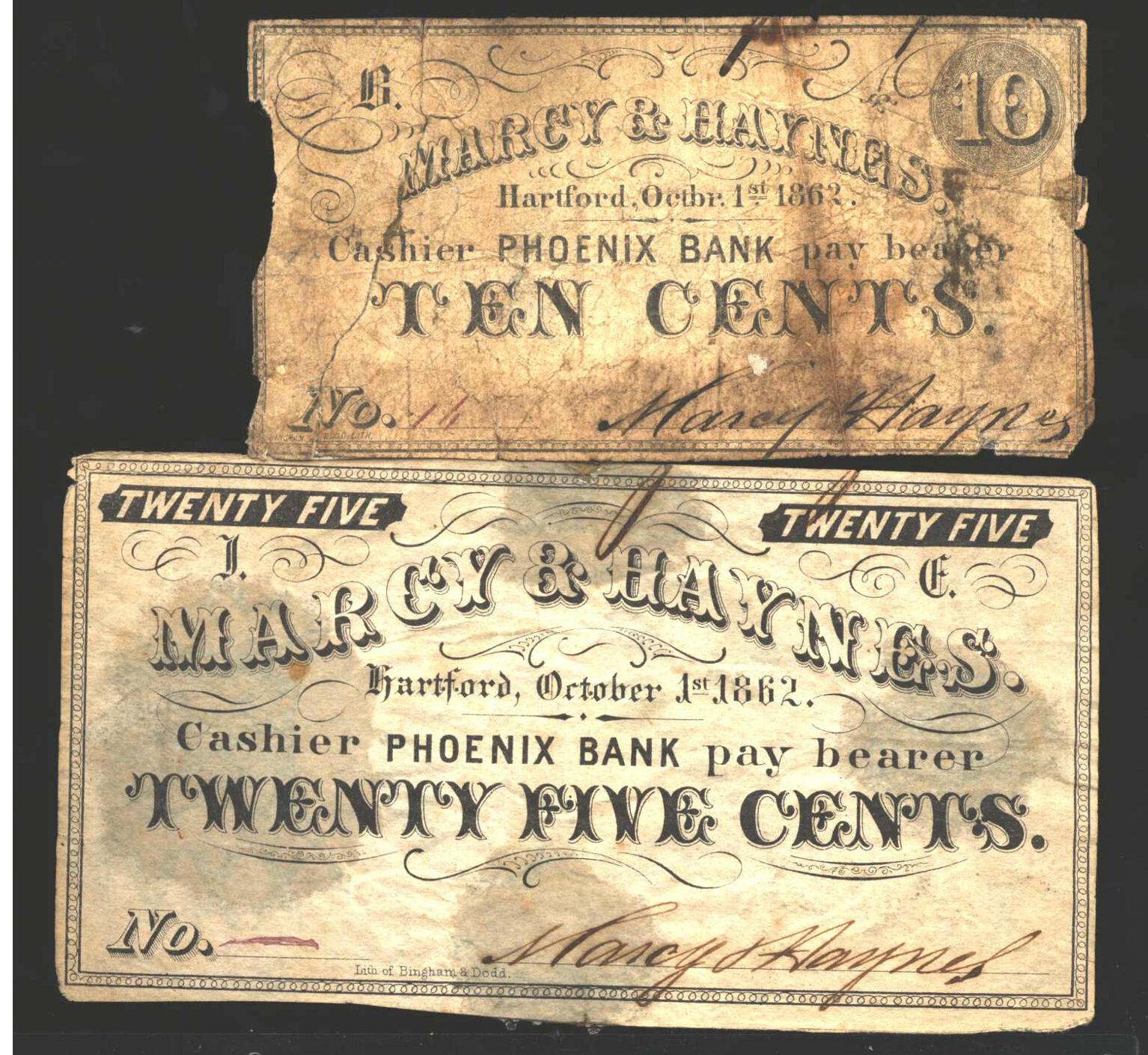
The search of the Phoenix bank led to an image of the bank itself, which was an iron building with a stone façade, crowned by a sculpture of an emerging phoenix. The stone carver seemingly sold as many of these birds as he could, another Phoenix sculpture was mounted over the vault. These pictures led to a search of other views of Main street in Hartford, as the location of Marcy and Haynes was only a few doors down from the bank.
I did find a few other pictures of the bank, looking both north and south from a similar vantage point. Oddly enough, the newspaper advertisements didn’t always give street addresses, presumably as they only served as a subconscious reminder for what the local population already knew.

Then came the stereo view, showing the view from the bank, looking south. I saved the image, and cropped it down but nothing was clear…I was surprised to find that the left and right images have different acuity. The right image being sharper, showing signs and building addresses more clearly.
Basically it would be a walk down the street from the vantage point of the camera. The ad for the neighbor yielded an address, and also the idea that the numbering could increase vertically as well as horizontally. Haberdasher, J.W. Bunce, at 307, as it turns out was an active member of the Sons of Temperence during the war. The dentist, CM Hooker, on 297 Main Street, was one of the first to use Nitrous Oxide during procedures.
Further down the street was an indicator, the name “Kelsey & H---“. Looking it up, the firm had been partnership between William H. Kelsey, James P. Carpenter and Henry P. Hitchcock, which was dissolved on February 5th, 1866, at which time Kelsey and Hitchcock started their Merchant Tailoring and Ready-Made clothing firm. That change in partnership is captured in this image.
It is when we walk back up the street, to 313 Main Street, the Brown and Gross bookstore, that the knob of a century of time is turned, opening up a door to national history. Brown and Gross had changed partnerships multiple times, but remaining in continuous operation until 1993. It is said that Harriet Beecher Stowe and Mark Twain were among its patrons. History of Brown and Gross bookstore.
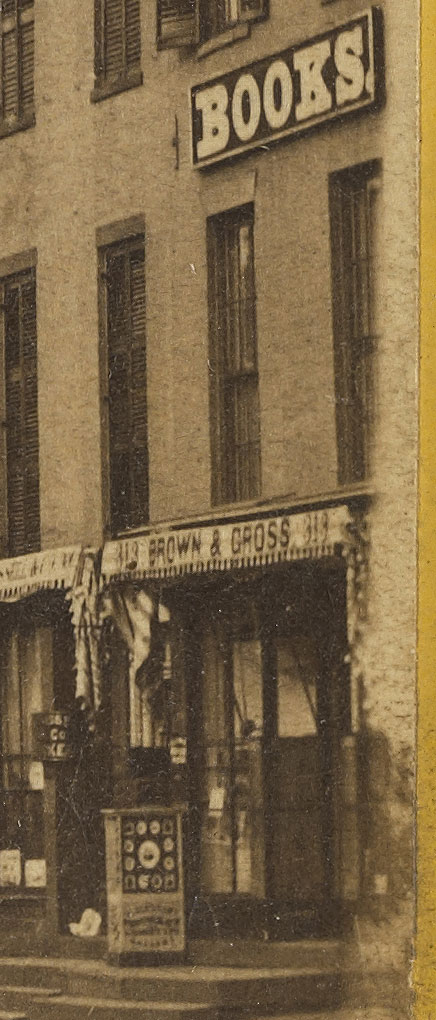 |
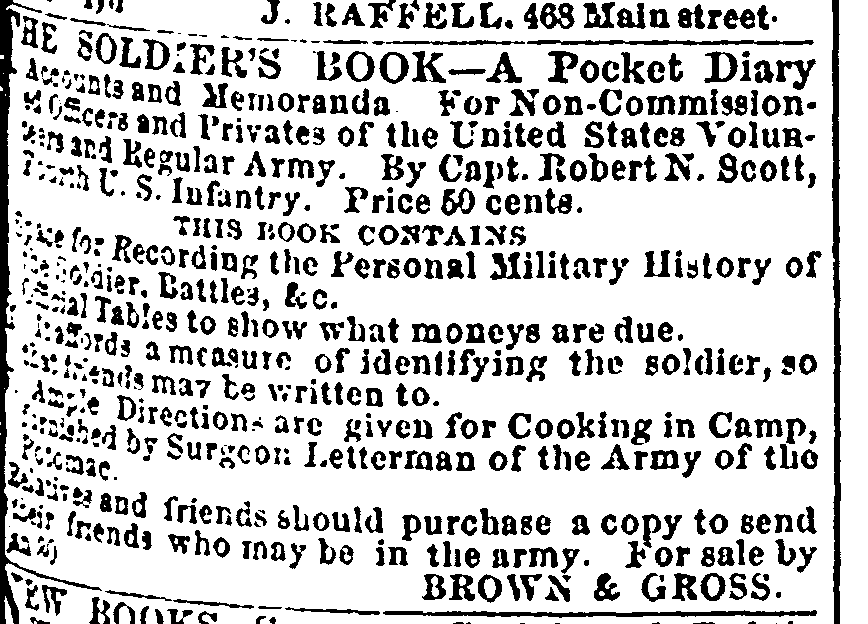 |
During his campaigning for the election, Lincoln stopped in Hartford on March 6th 1860. Directly across the street from the bookstore was the state capital building; the images were taken with the photographer’s back to the building. He was documented as meeting with Gideon Welles, Connecticut’s representative on the Republican National Committee, in front of Brown and Gross’ store, sitting on a bench, quite possibly the bench in the picture. Being a short distance from the seat of state government makes the story plausible. Lincoln in Hartford in March of 1860
As an aside, it is interesting to note the number of photographic studios in close proximity to the Capital building, clearly making it the catbird seat for the trade.
The pieces to this mosaic were all there, available to anyone. The passage of time had dried the mucilage of familiarity, scattering the tiles. Historians are quick to dismiss living history, as if the most visible aspect, namely interpreting in period attire, was the sole end product. In truth, the real journey travels along the same byways of academic history, resulting in a tangible, three dimensional object. This journey not only requires and understanding of the industries behind it, the manufacturers and retailers, but its role in society. Living history introduces us to these people, renewing the dusty bonds of familiarity with place and time, elevating the ordinary to a point of reverence.
This walk down 1860’s Main Street Hartford, started with a pair of reproduction shoes.
|

